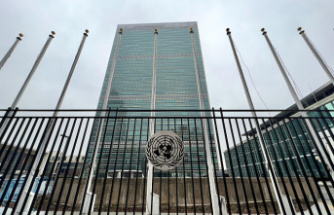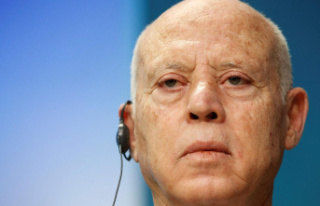Debates about the so-called cancel culture are also miserable because they often only leave the choice between two types of bad society. Either you end up in the camp of notorious eradicators who consider it unreasonable to be confronted with damnable things. Or you come across those who downplay the unbearable and simply want to let it be. This week, a commission of experts tried to avoid this binary constraint and presented recommendations for how to deal with the "Judensau" at the Wittenberg town church. But even these recommendations are not satisfactory.
On the sacred building, which is visited by tens of thousands every year as Martin Luther's preaching church, there is a sandstone relief from around 1280 with a sow whose teats are being sucked by people who are supposed to represent Jews. A rabbi looks into the sow's anus. When the abusive work, which was initially located in the interior and of which there are still several in Europe today, was hung on the facade in 1570, it was given the inscription "Rabini Shem HaMphoras". This alludes to Luther's hateful diatribe On Shem Hamphoras and the Sex of Christ (1543), in which the aged and in some respects failed reformer propagated obscene anti-Judaism, paraphrasing God's name, which Jews cannot pronounce.
Because everything about the relief and the inscription is completely unacceptable, an appropriate handling of it has been sought for years. A warning plaque that was laid outside on the ground in front of the relief in 1988 is considered inadequate. In it, the joints of four slabs make the sign of the cross, and the surrounding text reads: "God's real name / the reviled Shem Ha Mphoras / whom the Jews held sacred before the Christians / almost unspeakably / died in six million Jews / under a sign of the cross." That is badly twisted, and since the sign of the cross is also a symbol of mourning - for example in Christian cemeteries - one has to ask what Jews are supposed to do with it. In addition, the Shoah is mentioned in the inscription, but not the Christian anti-Judaism responsible for the relief. A stele erected later next to the slab with an explanatory text cannot correct these errors.
However, the arrangement was legally accepted: After the municipal church council of the Stadtkirche had resisted all demands for the removal of the "Judensau" relief for years, the Federal Court of Justice ruled in June that it could remain hanging, since the floor slab and the explanatory text from it were a "memorial “ would have done. Of course, a judge's verdict does not yet create an appropriate memorial site. So the problem remains.
In order to solve this, the expert council with representatives of the Protestant Church and Jewish institutions as well as monument conservators and art historians now recommends "bringing about a clear change in the previous situation that removes the sculpture from the current visibility". That sounds complicated and suggests arduous commission debates, but it must first be respected as an attempt to overcome the binary logic of cancel-culture debates. Because the relief should not be destroyed, nor should it continue to be displayed there.
Instead, it is suggested "to examine whether the possibility of a permanent presentation of the sculpture in close proximity to the church is feasible". According to the Commission, there are two ways of doing this. Either the relief remains on the church wall, but is covered there and a facsimile is exhibited not far from the church together with explanations and commemorative texts. Or the relief is removed from the church wall - monument conservators would have to decide on the feasibility - and then shipped as an original to the exhibition location that has yet to be created.
However, both options have an unacceptable flaw: When looking at the building, one would no longer be directly confronted with this sign of church shame – theologically one can speak of a sign of serious sin. Even if the commission within the church wants to supplement the history exhibition there with a stronger thematization of anti-Judaism, the fundamental error remains that the shame of Christian Jew-hatred can no longer be seen directly in this central place of Reformation tourism. Rather, Protestantism, which is present in the town church like in hardly any other building, could outsource its criminal mark and would no longer have to be ashamed of it every day in front of the church visitors. And the visitors could repress the argument more easily.
But that is exactly what Protestantism, which is ready to permanently confess its sins, cannot afford. Protestants in particular must look for ways to keep their disgrace present in themselves and consequently in their buildings, and thus to present them in the town church itself with a suitable memorial. With a memorial that always spoils the view for all visitors a bit.












